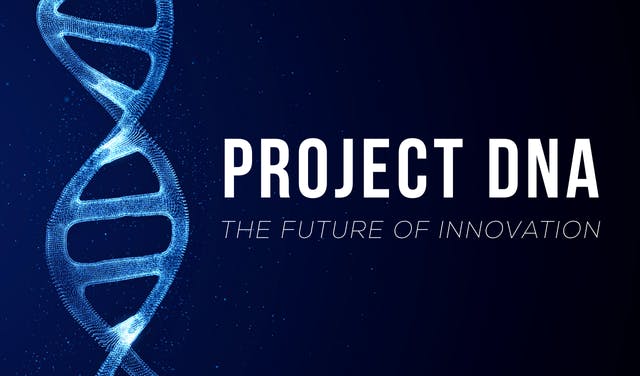By Dr. Doug Milburn, Chairman of the Protocase Companies
Why do so many companies, even brilliant ones, fail at projects? It’s not because their people lack intelligence, resources, or drive. More often, it’s because they rely on management frameworks designed for operations—not for innovation.
Operations thrive on repetition: producing parts, running campaigns, processing invoices. Projects, on the other hand, are one-time bets on the future. They are where innovation lives. And yet, despite their importance, most organizations approach projects with the same tools and mindset they use for operations—checklists, schedules, Gantt charts. It’s no wonder results are wildly inconsistent.
At Protocase and 45 Drives, we’ve experienced this firsthand. Sometimes projects soared—delivered early, exceeded goals, energized the team. Other times, they limped along or stalled. After years of reflection, trial, and error, we distilled the difference into a framework we call Project DNA.
This isn’t a new app or management fad. It’s a way of working that any startup founder, engineering team, or innovation leader can adopt to execute projects faster, with more clarity, and with dramatically higher odds of success. Most folks know we’re an open-source company, and I’m happy, in that spirit, to share our methodology–finely honed from decades of experience in hyper-growth technology spaces–with other innovators.
Projects Start With People, Not Tasks
Most project playbooks begin with task breakdowns. Project DNA starts with a “who list.” Who benefits from the project? Who has knowledge you don’t? Who needs to be bought in for success? This human-centered approach ensures projects aren’t just completed—they’re embraced and valuable.
Define the Impact, Then Measure It
A project’s true goal isn’t to complete a task—it’s to create an impact. Define that impact clearly: faster alignment in a printing process, smoother onboarding for new customers, a reduction in waste. Then set up measurement before you start. Metrics create momentum, clarity, and a shared definition of success.
Treat Every Idea as a Hypothesis
The most powerful shift in Project DNA is this: treat your project as a hypothesis to be tested. You might be wrong. That’s okay. By explicitly acknowledging uncertainty, you unleash the scientific method. Each step becomes an experiment that either validates, reshapes, or disproves your hypothesis—saving time, money, and frustration.
Attack Uncertainties First, Fast, and Cheap
Every project has “known unknowns” and “unknown unknowns.” The worst mistake is ignoring them. In Project DNA, we attack uncertainties head-on with fast, scrappy tests—duct tape prototypes, back-of-the-envelope models, trial runs. Every failed attempt is tuition paid for insight.
Eliminate Latency Like Your Life Depends On It
In business, time isn’t just money—it’s motivation. Latency kills both. Momentum evaporates, enthusiasm wanes, and opportunity costs compound. That’s why in Project DNA, we fight latency with urgency. Keep projects moving, even if it means using makeshift solutions at first. Speed is energy.
Scope Down and Build End-to-End, Fast
Don’t aim for perfection. Aim for a minimum viable version that works end-to-end. Even a stripped-down system forces unknown unknowns to reveal themselves. From there, you either confirm the path forward—or you pivot quickly, without sinking months into a dead end.
Motivate From the Journey, Not the Destination
Big, distant goals are inspiring on paper but demoralizing in practice. Motivation thrives on small wins. Break work into 24-hour steps. Celebrate each one. Those quick cycles of progress create a flywheel of energy that sustains teams through setbacks.
Balance Tenacity With Flexibility
Yes, grit matters. But grit without adaptability is just stubbornness. The best innovators are relentless in pursuit of the goal—but flexible in the path they take to reach it. Project DNA trains teams to push through where necessary, and to work around obstacles where it’s smarter.
Why Project DNA Matters Now
We’re living in a world where the pace of change is accelerating. Startups are racing against burn rates, corporations are trying to reinvent themselves, and even governments are being asked to innovate at startup speed. In this environment, latency is lethal.
Project DNA offers a way forward. It blends lean startup principles, scientific method, and human motivation into a practical playbook for modern innovation. It doesn’t just improve project execution—it transforms it.
At Protocase and 45 Drives, this framework has consistently delivered faster execution, sharper outcomes, and more energized teams. And we believe it can do the same for anyone: founders, engineers, corporate innovators, and dreamers turning ideas into reality.
Because in the end, innovation isn’t about perfect planning. It’s about building the right DNA into your projects—so they can adapt, accelerate, and thrive.
About Dr. Doug Milburn
Dr. Doug Milburn is a serial entrepreneur and innovator with over 35 years of experience in manufacturing, engineering, and software development. Born and raised in Cape Breton, Nova Scotia, he earned a PhD in mechanical engineering from the University of Waterloo after completing his undergraduate and master’s degrees in physics at Mount Allison University.
He co-founded Protocase in 2001, helping engineers and innovators accelerate projects with custom metal enclosures and parts delivered in 2–3 days, and launched its Protospace division to serve aerospace and defense clients with the fastest delivery in the sector. He has also co-founded Advanced Glazings and 45Drives, providing energy-efficient glass solutions and enterprise-grade storage systems.
About Protocase and ProtoSpace Mfg.
Protocase empowers engineers and innovators with custom enclosures, panels, and brackets through its “high velocity mass custom” process. Its ProtoSpace Mfg division provides fast CNC machining and sheet metal fabrication for aerospace and other industries, delivering precise, traceable, and compliant components for space, robotics, avionics, prototyping, and more.
This article is published under HackerNoon’s Business Blogging program.


